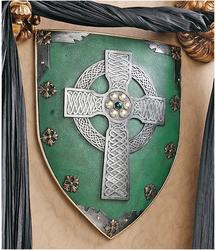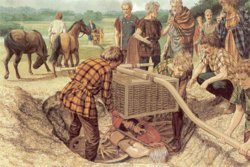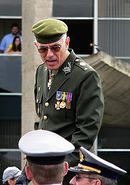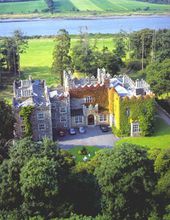Clan nGael

|
This page has been saved as historical information.
|
| ||||||||||
Clan nGael was an ![]() Irish clan of the region of Ulster. The last chief of the clan was Henrique nGael de Sousa, the clan enter in eRepublik by Arthur nGael. The clan make to revive all their titles and estates by diplomatic relations with nations and individuals of aristocracy around the New World. The clan has its most important clement to the throne, Irish royal descendant of the High Kings of Ireland.
Irish clan of the region of Ulster. The last chief of the clan was Henrique nGael de Sousa, the clan enter in eRepublik by Arthur nGael. The clan make to revive all their titles and estates by diplomatic relations with nations and individuals of aristocracy around the New World. The clan has its most important clement to the throne, Irish royal descendant of the High Kings of Ireland.
This family was a lineage of players that have dead and have passed their assets, and all its possessions to his heirs. By the marriage of de Sousa Family, the clan add this ![]() Portuguese family to on of its sept's.
Portuguese family to on of its sept's.
Clan nGael also had a great number of investments on the game being Gael Enterprises on of the most profitable economic and business endeavours.
Family and Heritage
The family Succession and rights came from his the heritage that kept the lineage unbroken since the middle ages. Lord chief of Clan nGael is the closest male-line Irish royal descendant related to the High Kings of Ireland, the last royal rulers of the Sovereignty Irish soil. There are closer female-line relatives (who according to the Constitutional Charter of 1826 have succession rights), but none of these has Irish nationality (which was required by the Constitutional Charter for succession to the throne); and so far none has made any active claim to the throne. He also kept the family tradition to renunciation to the throne, and give up is heritage rights to the Irish republic the unique authority that he recognize to be legitimate sovereignty representative of Irish people and all Irish territories.
nGael clan have Hereditary titles and Orders of chivalry, and the account his:
His Royal Highness, the Most Serene Lord, King of Ulster, and all Ireland , Marquis of Dublim, Count of Shannon, of Louth, of Cork , of Kerry, of Mayo, Sovereign of the Royal Order of Saint Patrik, Grand Master of the Order of the Immaculate Conception of Dublim, Grand Master by Birth of the Order of Saint Tiago, Judge of the Royal Brotherhood of Saint Columban and Knight of the Irish Order of the Independence
Lord Dillian nGael descendant related to the High Kings of Ireland, the last royal rulers of the Sovereignty Irish soil. There are closer female-line relatives (who according to the Constitutional Charter of 1826 have succession rights), but none of these has Irish nationality (which was required by the Constitutional Charter for succession to the throne); and so far none has made any active claim to the throne. He also kept the family tradition to renunciation to the throne, and give up is heritage rights to the Irish republic the unique authority that he recognize to be legitimate sovereignty representative of Irish people and all Irish territories.
Dilian nGael have Hereditary titles and Orders of chivalry that most of the being renounce, and the account his:
His Royal Highness, the Most Serene Lord, King of Ulster, Grand Master of the Order of the Immaculate Conception of Dublim and Knight of the Irish Order of the Independence
He also have other hereditary titles that he decide to do not make a claim, leave him available to make his family claim to honorific title of Lord of Ulster, recognized by the eIreland republic by decree.
Clan chief
Arthur nGael
Arthur Con Ulad Nuada Mac Duinn nGael Sléibe more commonly now as Arthur nGael (born April 22, 2010 - day 884) was an ![]() Irish and the 34th Monarch of Ulster in-exile and a claimant to the throne of Ireland, best known for being the descendent of Ulster Kings, from his last king Ruaidrí mac Con Ulad Mac Duinn Sléibe (1172-1201). He was an opposer of English usurpers, and he kept the tradition of renunciation of the throne to the Irish Republik and Ireland, has he swear allegiance to Irish Republik.
Irish and the 34th Monarch of Ulster in-exile and a claimant to the throne of Ireland, best known for being the descendent of Ulster Kings, from his last king Ruaidrí mac Con Ulad Mac Duinn Sléibe (1172-1201). He was an opposer of English usurpers, and he kept the tradition of renunciation of the throne to the Irish Republik and Ireland, has he swear allegiance to Irish Republik.
Dillian nGael
Lord of Ulster Dillian Con Ulad O'Relley Duinn nGael more commonly now as Dillian nGael (born 24 October 2010 - day 1069 at Drogheda, Louth) was an ![]() Irish entrepreneur and the 35th Monarch of Ulster in-exile and a claimant to the throne of Ulster, best known for being the descendent of Ulster Kings, from his last king Ruaidrí mac Con Ulad Mac Duinn Sléibe (1172-1201) [1]. He succeeded as claimant of Ulster Kingship upon the death of his father Arthur nGael. He defends the ideia of honorific title insted of political, and he kept the tradition of renunciation of the throne to the eIrish Republik and eIreland, has he swear allegiance to eIrish Republik.
Irish entrepreneur and the 35th Monarch of Ulster in-exile and a claimant to the throne of Ulster, best known for being the descendent of Ulster Kings, from his last king Ruaidrí mac Con Ulad Mac Duinn Sléibe (1172-1201) [1]. He succeeded as claimant of Ulster Kingship upon the death of his father Arthur nGael. He defends the ideia of honorific title insted of political, and he kept the tradition of renunciation of the throne to the eIrish Republik and eIreland, has he swear allegiance to eIrish Republik.
A member of the Clan nGael, originally from Northern Ireland, Dillian became the first member of is family to officially propose the establishment of the Honorific title. Dillian nGael was the first son of the union of Arthur nGael and Alba O'Rilley nGael, is name is been choose by his family by its profound meaning (meaning of Dillian: 'Loyal'); loyal to family traditions, loyal to eIreland. After the assassination of is father he became the formal head of the nGael Clan, but he actualities command the family destiny when we makes 20 years old.
He participate in the fight for expulsion of the English in Northern Ireland, is decisions in battle field prove most efficient and finally after more five century's the ancient Ulster Realm return to eIreland.
Henrique nGael
Henrique nGael de Sousa (born December 29, 2010 - day 1,135) is a ![]() Portuguese entrepreneur, was also an academic and news commentator.
Portuguese entrepreneur, was also an academic and news commentator.
His also successful business venture as CEO of Gael Enterprises, make the conglomerate to expand to new business areas and growth financially. Although was moving around with some frequency he have strong ties to homelands of its fathers. He was the last chief of the Clan nGael, receiving the title directly from its father, Dillian nGael, best know for being descent of direct line of Ulster Kings. His also inherited the de Sousa family titles and estates by mother side.
Sept or Clan
Scholars sometimes disagree about whether it is better to use the terms "sept" or "clan" when referring to traditional Irish family groups. Historically, the term 'sept' was not used in Ireland until the nineteenth century, long after any notion of clanship had been eradicated. It is often argued that the English word 'sept' is most accurate referring to a sub-group within a large clan; especially when that group has taken up residence outside of their clan's original territory.
The end of the clan system
In the 16th century English common law was introduced throughout Ireland. Together with a centralized royal administration in which the county and the sheriff replaced the 'country' and the Clan Chief.[1]
When the Kingdom of Ireland was created in 1541, the Dublin administration wanted to involve the Gaelic chiefs into the new entity, creating new titles for them such as the Earl of Tyrone, or Baron Inchiquin. In the process they were granted new coats of arms from 1552. [2]
The early 17th century was a watershed in Ireland. It marked the destruction of Ireland's ancient Gaelic aristocracy following the Tudor re-conquest and cleared the way for the Plantation of Ulster.[3] In 1607 the senior Gaelic Chiefs of Ulster left Ireland to recruit support in Spain but failed, and instead eventually arrived in Rome where they remained for the rest of their lives [4]
Later developments and "revival"
However, despite the loss of their traditional lands and forced emigration into the service of Catholic monarchs across Europe, the spirit of the Irish clans remained. To this day the majority of Irish people in Ireland and around the world can tell you the name of the clan from which they descend. The growing influence of the Gaelic League at the turn of the 20th century rekindled an interest in Gaelic culture and prompted a cultural revival.[5]
Clan Relations
Due to the clan Clements, they established relations with other families and nations. This interest came to establish a line of network to improve the image of the clan and to endorse the titles and aristocratic position. The clan nGael have a long history to promote independence movements, nationalist of Celtic nations, regions and countries. Current relations with the family:
Nations
-
 the clan have diplomatic relations and friendship with the government of Ireland.
the clan have diplomatic relations and friendship with the government of Ireland. -
 the clan have some sort of relations, but few (because the constant attacks of UK government to the clan).
the clan have some sort of relations, but few (because the constant attacks of UK government to the clan). -
 the clan have friendship with the independence movement of Scotland.
the clan have friendship with the independence movement of Scotland. -
 the clan have diplomatic relations with the independence movement of Wales.
the clan have diplomatic relations with the independence movement of Wales. -
 the clan have diplomatic relations and friendship with the government of Portugal.
the clan have diplomatic relations and friendship with the government of Portugal. -
 the clan have friendship with the independence integrationist movement of Galicia.
the clan have friendship with the independence integrationist movement of Galicia. -
 the clan have friendship with the nationalist movement of Asturias.
the clan have friendship with the nationalist movement of Asturias. -
 the clan have friendship with the nationalist movement of Cantabria.
the clan have friendship with the nationalist movement of Cantabria. -
 the clan have friendship with the nationalist movement of Basque Country.
the clan have friendship with the nationalist movement of Basque Country. -
 the clan have friendship with the nationalist movement Cornwall.
the clan have friendship with the nationalist movement Cornwall. -
 the clan have friendship with the independence movement Brittany.
the clan have friendship with the independence movement Brittany. -
 the clan have diplomatic relations with the government of Kingdom of Mindanao and Sulu.
the clan have diplomatic relations with the government of Kingdom of Mindanao and Sulu. -
 the clan have diplomatic relations with the government of Avataronia
the clan have diplomatic relations with the government of Avataronia
Other relation
- Scottish Clan Council established contact with the council.
- Yan Clan have friendly relations with nGael Clan.
- Church of Sacramentism have friendly relations with nGael Clan.
- Royalist of New World have friendly relations with nGael Clan.
Family endeavours
The Clan nGael have a group of endeavours, the first a probably the less famous is the nGael Trust Fund that is a fund of investment that comprise all family gold and money, that capitalize the family fortune. The trust fund is managed by stcok brokers and family members, that have the mission to increase the the financial and economic power of the clan. The trust fund, is used to financial the family dealings and investments in business and charitable endeavours.
The Gael Enterprises also referred to as GE (EXR:GE) is a ![]() Multinational holding corporation that operates through its subsidiaries. It is the parent of around 60 sub-companies that each manage a small number of brands/companies . In 2010, GE based on a formula that compared the total sales, profits, assets, and market value of several multinational companies, appeared to be one of new start-up company's that making a excellent investment.
Multinational holding corporation that operates through its subsidiaries. It is the parent of around 60 sub-companies that each manage a small number of brands/companies . In 2010, GE based on a formula that compared the total sales, profits, assets, and market value of several multinational companies, appeared to be one of new start-up company's that making a excellent investment.
By 2010, Dillian nGael had brought together several of his business interests under one corporation to form Dillian Enterprise. At about the same time, nGael and Sons Company, under the leadership of Arthur nGael, gained access to a number of key patents through the acquisition of a number of competitors. Subsequently, Gael Enterprises was formed by the 2010 merger of Dillian Enterprise of Dublin, and Arthur nGael and Sons Company, Drogheda, and both companys remain in operation under the GE banner to this day. The company was incorporated in Galway , with the Mayo office as headquarters (Eyre Square) for many years thereafter.
Gael Enterprises operates from its headquarters at Galway, in the Mayo in Eyre Square. The Conglomerate is run by the nGael Clan whose subsidiaries are administrated by family members.
For the last of family endeavours is the Sagesse Foundationoperated by family members and have the mission to record history of the game, charitable aid to the poor and the institutes of investigation (this centres make the university)
References
- ↑ "Oxford Companion to Irish History”. Edited by S J Connolly. Page 182. ISBN 9780199234837.
- ↑ The associated policy of surrender and regrant involved a change to succession to a title by the European system of primogeniture, and not by the Irish tanistry, where a group of male cousins of a chief were eligible to succeed by election. This change to the inheritance system was also taken up by the Scottish clans in the 17th and 18th centuries.
- ↑ Curley, 2004
- ↑ (See: Flight of the Earls). After this point, the English authorities in Dublin established real control over all of Ireland for the first time, bringing a centralised government to the entire island, and successfully disarmed the native clans and their lordships.
- ↑ In the 1940s Edward MacLysaght, the Chief Herald of Ireland, drew up a list of over 240 Irish clans. The first modern Irish “clans“ were reformed in the latter half of the 20th century. Today such groups are organised in Ireland and in every continent around the world. In 1989 an independent organisation, Clans of Ireland, was formed under the leadership of Rory O'Connor, Chieftain of the “O'Connor Kerry Clan“, with the purpose of creating and maintaining a Register of Clans. A Register of Irish Clans can be consulted on its website.
- Nicholls, K. (2003). Gaelic and Gaelicized Ireland in the Middle Ages. Dublin: Lilliput Press, Second Edition.
- Curley, W.J.P. (2004). Vanishing Kingdoms: The Irish Chiefs and their Families. Dublin: Lilliput Press.
- Ó Muraíle, N. (2003). The Great Book of Irish Genealogies Compliled by Dubhaltach MacFhirbhisigh 1645-1666. Dublin. De Búrca Books.
Links (see also)
- Sagesse Foundation, maked by Henrique nGael
- Page of Dillian nGael on ERepublik
- Gael Enterprises is an Irish multinational conglomerate corporation founded by Dillian
- Times weekly is an Irish news magazine (Dillian is press director)
- Page of Arthur nGael on ERepublik
- EXR ERepublik Stock Exchange
- ereptools.net eRepublik Tools
- Page of Henrique nGael de Sousa on ERepublik
- Page of Gael Enterprises in the game









